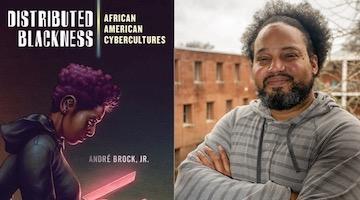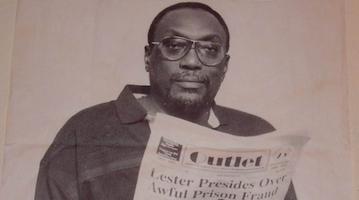The roots of racial differences have to do with the past treatment of enslaved people in the North as well as the South.
“Most Northerners today have little knowledge of the prior history of enslavement and discrimination in their own region.”
In this series, we ask acclaimed authors to answer five questions about their book. This week’s featured author is Marc Ross. Ross is the William Rand Kenan, Jr. Emeritus Professor of Political Science at Bryn Mawr College. His book is Slavery in the North: Forgetting History and Recovering Memory.
Roberto Sirvent: How can your book help BAR readers understand the current political and social climate?
Marc Ross: Social and racial inequalities are often deeply rooted in historical experiences and relationships. Certainly, this is the case with race in the United States. The severe inequalities we can easily observe today are grounded in the earliest histories of the colonies and states. Significantly narrowing these gaps has proven to be extremely difficult in America even when we have attempted it. One reason is that we did not fully appreciate that the roots of racial differences have to do with the past treatment of enslaved people in the North as well as the South. Martin Luther King clearly recognized this when he began the Chicago Freedom Movement in 1966. For many decades, Northerners argued that the problems and inequalities of race were fundamentally “a Southern problem.” While this certainly made many Northerners feel good about themselves, it did not permit the inhabitants of the North to look carefully at their own behaviors and institutional inequalities. For example, most Northerners today have little knowledge of the prior history of enslavement and discrimination in their own region. Others ignore the past history of this institution believing that their own ancestors came to the country after slavery had ended and so they share no responsibility to do anything about its legacy today. For many, the issue of reparations is seen as not worth discussing because “slavery ended so long ago,” or “African-Americans need to pull themselves up by their bootstraps like my ancestors did” while not even acknowledging that whites, including recent immigrants, always have had an easier time gaining admissions to schools and colleges, getting mortgages, obtaining good jobs, or earning salaries higher than those that African-Americans are paid. The legacy of slavery still is present in all regions of the country and understanding its history in the North will help people better understand why this is the case.
What do you hope activists and community organizers will take away from reading your book?
After reviewing the history of enslavement in the North and asking why and how our collective memories of it are so weak, the second half of my book explores ways that the forgotten history of Northern enslavement has slowly been recovered in recent decades, often through the actions of local communities and activist leaders. By learning how other communities have addressed the issues associated with remembering the ancestors and their past, there is often a “snowball process” as people who view the actions taken in other communities begin to undertake their own initiatives. One example of this that impressed me a great deal is the effort to restore and memorialize old, overgrown and forgotten Black burying grounds that often include the remains of people who were once enslaved. These initiatives often spark intense conflicts when the older burying ground is now used for a very different purpose such as a playground, an apartment building, a road, or park. Towns and cities are often initially unwilling to undertake the research on the history of the site or to construct even a modest memorial or historical marker on it. Despite a typical initial rejection of activists’ requests or demands, continued mobilization and appeals to elected officials or government offices frequently results in positive responses over time. These positive outcomes reinforce the desire of other activists to continue to mobilize and the successes provide positive reinforcement to those in other towns and cities showing that success often breeds success.
We know readers will learn a lot from your book, but what do you hope readers will un-learn? In other words, is there a particular ideology you’re hoping to dismantle?
The simplest un-learning is that the long period of slavery in the United States is only a Southern story. While the number of enslaved people in the North was smaller than in the South, and Northern slavery ended without the need for a Civil War, many people and institutions in the North were deeply involved in slavery and its perpetuation and remained unchanged in their beliefs after manumission. In addition to the thousands of slave holders in the North, there were Northern banks and other financial institutions that helped finance Southern slavery, universities that used enslaved people to perform a wide range of work to construct and labor on their campuses while never admitting Black students, Northern industries produced and profited from clothing and tools that supported Southern plantation slavery in the 19th century, and the Northern shipping industry that used Black workers in every phase of its activities including the procurement of Africans who were then sold into bondage in both the Caribbean and the North American mainland. Lastly, it is worth noting that at the 1787 Constitutional Convention many Northerners including those who said they supported abolition accepted provisions in the Constitution that helped to maintain slavery. I also hope readers better understand that after manumission in the North, Blacks were in no way equal citizens with the same rights as white people, and that inequality multiplies generation after generation.
Who are the intellectual heroes that inspire your work?
This is a terrific question and I don’t find that I have a single, quick answer to it. In doing the research for this book over ten years, I relied on the inspiration from a number of people to guide me. First of all, I am not a historian but a political scientist so a first step was that I needed to learn as much as I could about the history of slavery in the U. S. in general and in the North in particular. Ira Berlin’s broad ranging books, particularly, Many Thousands Gone: The First Two Centuries of Slavery in North America, was especially insightful. Berlin’s emphasis on the different forms of enslavement in four distinct regions of colonial America at three different time periods offered a rich analysis that made clear that while the enslaved were not free in any of the regions, that the kinds of work they did in each, the structure of their lives, the kind of legal constraints in each differed in many important ways. Berlin had a lot to say about the lives of the enslaved in the North, a topic that many other studies of slavery either treated in a cursory manner or even avoided entirely.
Two other scholarly works were especially important to me. One is the pioneering work of Lorenzo Greene, The Negro in Colonial New England, published in 1942. It was inspiring in showing that the records available on enslavement even three centuries earlier were not nearly as bare as many people had assumed. Another is Joanne Melish’s, Disowning Slavery: Gradual Emancipation and Race in New England, 1780-1860, that directly and powerfully critiques the notion that the enslaved in New England were treated far better than those in the South and that once they were free, they could be full citizens of the U. S. She shows how racial prejudice and discrimination rapidly replaced slavery in the region. The work of Gary Nash on Pennsylvania also showed me how his careful analysis of what was in the public records told us far more about the lives of the enslaved than many thought possible.
“While the enslaved were not free in any of the regions, their lives differed in many important ways.”
There were more than a few top-notch, detailed histories built around single towns and the enslaved in them over time. Two that stand out to me are Allegra di Bonaventura’s use of slave owner Joshua Hempstead’s decades long diary and other records from the city of New London and courts in New England to recount the complex lives of two families over three generations. One is Hempstead’s and the other is that of Adam Jackson. Hempstead owned Jackson although part of his family was enslaved and others were free. di Bonaventura subtly recounts the trials and tribulations of both families from the late 17th until the mid-18th century and in the process shows us the complexity and diversity of the lives of the enslaved in that period. In a similar way, Marjory Gomez O’Toole uses the town records from Little Compton, Rhode Island, to write about the lives of every enslaved person there between the 1670s and 1815 and to then trace the legacy of several of them into the present.
There were also two projects from non-historians that resembled my own in their expression of the same kind of outrage I felt upon learning about the details of enslavement in the North. Three Connecticut journalists, Anne Farrow, Joel Lang, and Jenifer Frank wrote Complicity: How the North Promoted, Prolonged, and Profited from Slavery in 2005 that spelled out its existence and impact in a powerful way. A few years later, Katrina Browne, a descendant of a Rhode Islander, Thomas DeWolf, the largest slave trader in the young United States, organized a gathering of some of the DeWolf descendants not only to revisit the family’s former home in Bristol, Rhode Island but also to travel to Ghana to see places where he purchased many of the enslaved to sell in the Caribbean and the southern United States, and to Cuba to see the sites of former DeWolf plantations where the enslaved grew sugar cane until late in the 19th century. Browne’s efforts led to “Traces of the Trade,” a PBS documentary, and Thomas Norman DeWolf’s, Inheriting the Trade: A Northern Family Confronts its Legacy of the Largest Slave-Trading Dynasty in U. S. History.
Lastly, my framing for this book is around the concepts of collective memory and forgetting. I used both recent and not so recent works of scholars employing these concepts to help me decide how to explain how and why the history of slavery in the North disappeared from the region’s collective memories for a long period of time, and then how in recent decades these memories are being slowly recovered. Among the thinkers who particularly influenced me are Alon Confino, Paul Connerton, Maurice Halbwachs, Michel-Rolph Trouillot, Jeffrey Olick, James Young, and Yael Zerubavel.
In what way does your book help us imagine new worlds?
This is a really complicated question. I think the first step is that people have to come to understand that institutions such as slavery are social and political constructions. What follows is that what we construct, we can deconstruct. People can come to appreciate that grave mistakes were made in the past and while we cannot undo them, we can take steps to change current institutions and practices that reduce, and sometimes remove the effects of these past actions to make sure that people living today and going forward are not punished for past mistakes. This can take many forms ranging from statements to a wide range of actions. What these steps should be is not for me to dictate. Rather, as Ta-Nehisi Coates has argued, the payment of reparations for past injustices needs to be negotiated in the present and can take a wide variety of forms.
Roberto Sirvent is Professor of Political and Social Ethics at Hope International University in Fullerton, CA. He also serves as the Outreach and Mentoring Coordinator for the Political Theology Network. He is co-author, with fellow BAR contributor Danny Haiphong, of the new book, American Exceptionalism and American Innocence: A People’s History of Fake News—From the Revolutionary War to the War on Terror.
COMMENTS?
Please join the conversation on Black Agenda Report's Facebook page at http://facebook.com/blackagendareport
Or, you can comment by emailing us at comments@blackagendareport.com



















